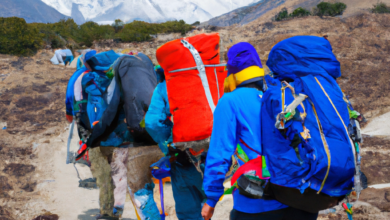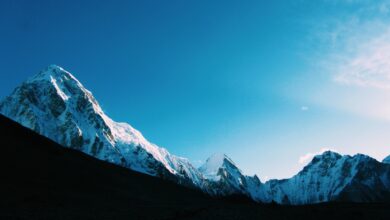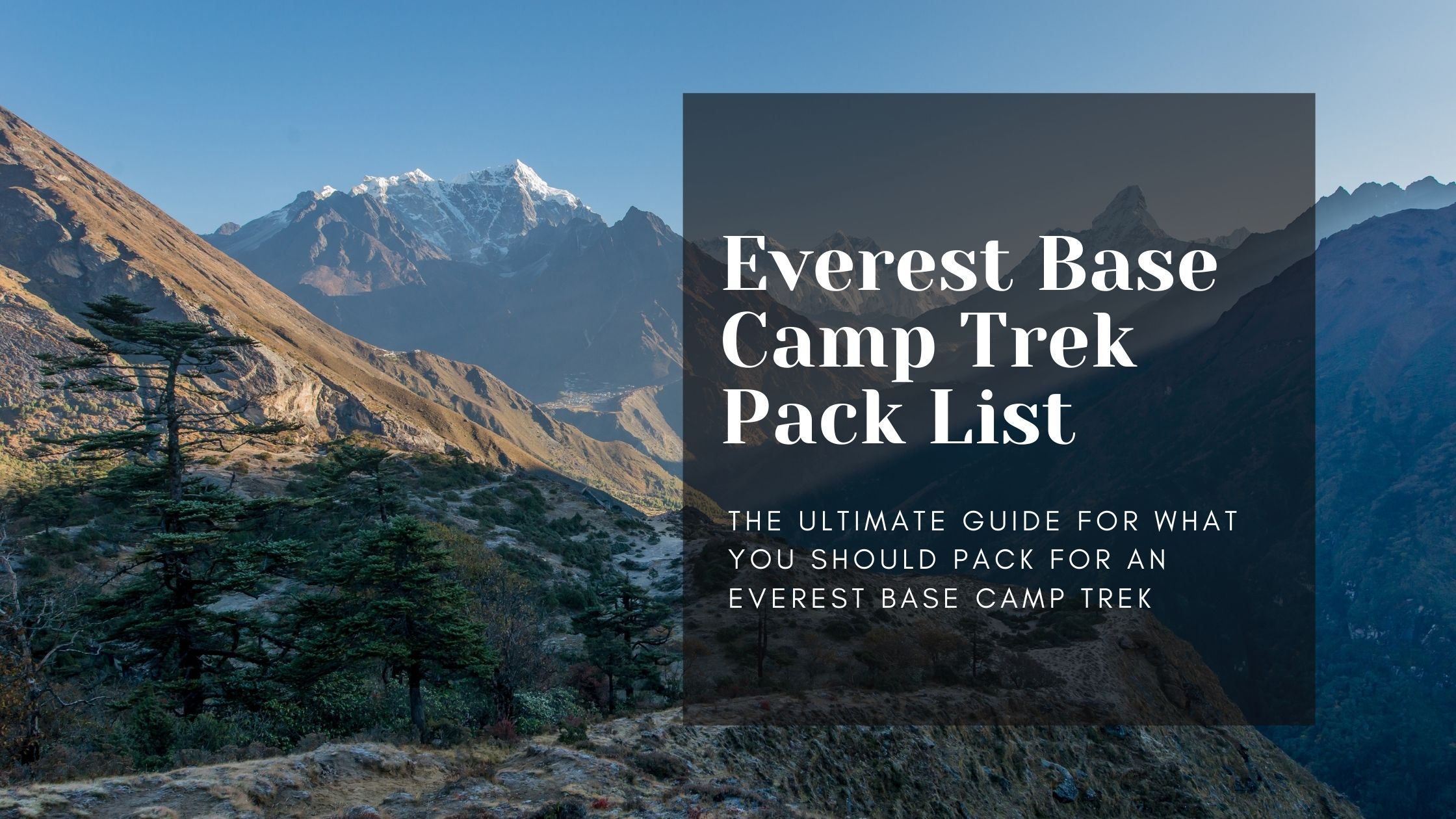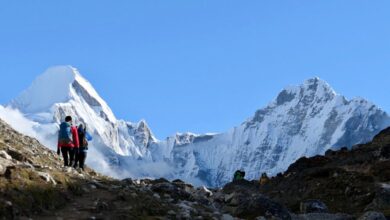Everest Treks
How to Plan Your Mount Everest Trek from India: A Complete Guide

Mount Everest stands tall at 8,848 meters. This majestic peak remains the ultimate dream for adventure seekers, and Indian trekkers can now reach their base camp more easily than ever before.
Your Mount Everest trek needs proper planning. The right season, route selection, cost analysis, and physical preparation play crucial roles in your success. Tour packages vary by a lot in price, yet every trekker calls it a priceless experience.
This piece guides you step by step to plan your Everest Base Camp trek successfully. We’ll cover mount everest trekking package options from India, preparation essentials, cultural aspects, and environmental guidelines that will help turn your dream into reality.
Understanding the Cultural Journey
A Mount Everest trek goes beyond physical challenges. This sacred journey takes you through centuries of tradition and spirituality. Your Mount Everest trekking package from India becomes more meaningful when you understand the rich cultural heritage waiting for you.
Nepal-India connections
India and Nepal share deep cultural bonds that make your trek feel like visiting a familiar yet exotic land. Both countries have common religious and philosophical traditions, especially in Hinduism and Buddhism. Indian travelers find this trek particularly meaningful because they encounter familiar religious symbols and practices with unique local interpretations throughout their journey.
Local customs and etiquette
The Sherpa community calls the Everest region home. These people are known for their mountaineering skills and warm hospitality. Their culture has deep roots in Tibetan Buddhism which shows in their daily life. It would be best if you remembered these customs during your trek:
- Greet locals with “Namaste” while pressing your palms together
- Remove shoes before entering homes, monasteries, or temples
- Dress modestly, covering your shoulders and knees
- Walk clockwise around religious monuments
- Ask permission before photographing people or religious objects
The teahouse culture along the trek route gives you chances to experience local hospitality. These places serve as rest stops and cultural meeting points where trekkers and locals share meals and stories.
Religious significance of the trek
Mount Everest holds deep spiritual importance in Hindu and Buddhist traditions. The mountain is known as Sagarmatha in Nepal and Chomolungma (Mother Goddess of the World) in Tibet. Local people consider this ground sacred. Your journey will show you many signs of this spiritual significance.
Prayer flags in five colors line the trail. Each color represents different elements – blue for sky, white for air, red for fire, green for water, and yellow for earth. People believe these flags spread blessings and prayers across the mountains with every wind gust.
The Tengboche Monastery stands as one of the most important spiritual centers in the Khumbu region. This serene space allows for reflection and cultural immersion. You might see Buddhist ceremonies or receive blessings from local monks here, adding spiritual depth to your mount Everest tour.
Local guides often perform traditional puja ceremonies before climbing to higher altitudes to seek blessings for safe passage. This practice shows the deep respect for mountains that runs through every aspect of life here. It reminds visitors they’re stepping into a sacred realm, not just climbing a peak.
Digital Planning and Technology
Modern technology now connects even the world’s highest trekking routes. Your Mount Everest trekking package from India needs careful planning, and technology can boost your trip by a lot, especially when you have the right tools.
Essential apps and online resources
The right apps can turn your smartphone into a powerful trekking companion. These must-have applications will help you along the way:
- PeakFinder: Identify mountains and peaks (paid app)
- MAPS.ME: Accurate offline trail navigation
- Altimeter: Monitor your elevation
- RealityMaps: 3D terrain visualization
- GroupExpenses: Group expense management during the trek
Communication options during the trek
The Everest region’s connectivity has improved over the last several years since 2010. 3G mobile coverage reaches from Lukla (2,840m) to Gorak Shep (5,164m), though signal strength varies throughout. You can stay connected through two main options:
- Local SIM Cards:
- Ncell and NTC networks work reliably
- Get your SIM in Kathmandu before the trek
- Data packages cost about USD 2.50 for 1GB
- Wi-Fi Access:
- Most teahouses offer paid service
- Speeds work well for simple communication
- Everest Link and Airlink sell prepaid packages
Pro tip: The signal works well generally, but gets nowhere near as strong beyond Tengboche, especially when you have reached Dingboche, Pheriche, and Lobuche areas.
Photography tips and gear
The majestic Himalayas deserve great photos, and you’ll need the right equipment and planning. Here’s what you should know:
Essential Photography Gear:
| EquipmentRecommendation | |
| Camera | DSLR/Mirrorless with weather sealing |
| Lenses | Wide-angle and standard zoom |
| Support | Lightweight tripod for stability |
| Extras | Extra batteries and dry bags |
Key Photography Locations:
- Dingboche area: Perfect for Ama Dablam shots
- Pheriche Valley: Excellent views of Cholatse
- Kala Patthar: Panoramic views of Everest
- Above Namche Bazaar: First clear view of Everest
Your equipment needs protection from moisture and cold temperatures. Battery life diminishes significantly at high altitudes, so pack portable power banks or solar chargers. You can charge your devices at most teahouses for a fee during your mount everest tour.
Mental Preparation Strategies
Mental preparation is just as significant as physical training for your Everest trek. Many experienced mountaineers believe it’s 80% mental and only 20% physical. Your success depends on understanding the psychological aspects of this challenge while planning your Mount Everest trekking package from India.
Building mental resilience
Your mind needs training just like your body. These proven techniques will help you prepare:
- Mindful Breathing: Practice yogic breathing exercises daily
- Visualization: Picture yourself successfully completing challenging sections
- Positive Affirmations: Create personal mantras for tough moments
- Focus Training: Meditation to improve concentration
- Physical-Mental Connection: Learn to stay calm during strenuous exercise
Managing expectations
Your confidence grows and anxiety reduces when you know what’s ahead. Here’s what to expect during your Mount Everest tour:
| ChallengeReality CheckMental Preparation | ||
| Altitude Effects | Possible dizziness, fatigue | Accept symptoms as normal, stay alert |
| Weather Changes | Unpredictable conditions | Accept uncertainty, stay flexible |
| Physical Demands | Break the journey into smaller segments | Break journey into smaller segments |
| Simple Facilities | Limited amenities | Adjust expectations, focus on experience |
Dealing with challenges
These proven strategies will help you face difficulties during your trek:
- Stay Present: Take one step at a time instead of thinking about the whole experience
- Use Support Systems:
- Ask your guide for encouragement
- Share experiences with fellow trekkers
- Draw strength from group dynamics
- Monitor Your Body:
- Watch for altitude sickness symptoms
- Listen to your body’s signals
- Speak up about your concerns
- Maintain View:
- Think about your motivation
- Focus on the experience, not just the destination
- Celebrate small wins along the way
The cost of going to Everest base camp might seem high, but you’ll gain priceless mental strength. Start your mental preparation weeks before departure while planning your Mount Everest trekking package from India. These techniques become natural habits during your training hikes and help when you need them most.
Note that: Summit fever can be dangerous – keep a clear head and make smart decisions. Your safety comes first, and sometimes the bravest choice is to turn back. Focus on your breathing when anxiety rises, and trust your preparation and your guide’s expertise.
Food and Nutrition Planning
Your nutrition choices can make or break your Everest Base Camp trek. High altitudes change how your body handles food and metabolism. This makes food planning a vital part of your mount everest tour.
Dietary considerations at altitude
Your body needs different nutrition during your mount everest trekking package from India. Above 4,200 meters, you might lose up to 15% of body weight because your appetite drops and metabolism speeds up.
Here’s how your daily nutrition should look:
- 60-65% carbohydrates (quick energy)
- 20-25% fats (sustained energy)
- 15% proteins (muscle repair)
Easy-to-digest foods work best since they need less oxygen to break down. A typical trekker between 70-80 kg burns 700-1,000 calories per hour on challenging trails.
Indian food availability
Your Mount Everest base camp costs cover meals if you book a standard package, and you’ll find plenty of familiar options. Teahouses serve both local and international dishes, including Indian favorites:
| Meal TypeAvailable OptionsPrice Range (USD) | ||
| Breakfast | Porridge, Chapati, Toast | 5.00 – 10.00 |
| Lunch/Dinner | Dal Bhat, Vegetable Curry | 5.00 – 18.00 |
| Snacks | Energy Bars, Dry Fruits | 5.00 – 10.00 |
Pro tip: Dal Bhat is your best friend on the trek. It comes with unlimited refills and gives you the perfect mix of nutrients for high-altitude trekking.
Water and hydration management
Good hydration is key to your Everest Base Camp Trek from India experience. You should drink 3-4 liters of water daily, even without feeling thirsty. Here’s how to stay hydrated:
- Water Sources:
- Teahouse boiled water
- Natural water sources (with purification)
- Bottled water (limited availability)
- Purification Methods:
- UV sterilization (SteriPEN)
- Chlorine/iodine tablets
- Portable filters
Bottled water prices go up with altitude, from $1-4 per liter. A reusable bottle with a filter straw might be smart – it removes 99% of waterborne bacteria and microplastics.
Mix plain water with electrolyte drinks and warm beverages like soup and tea. This keeps your minerals balanced and helps you acclimatize better. Caffeine and alcohol can dehydrate you, so drink them in moderation.
Your Mount Everest trekking package from India should include safe drinking water costs. Teahouses offer free tap water, but you’ll need purification tablets ($10-30 for the trek) or bottled water, which adds to your trek budget.
Group vs Solo Trekking Decisions
The choice between solo and group trekking will shape your entire Everest trip experience. Both approaches have their own advantages. You’ll need to understand their unique features to make the right choice that fits your mount everest from india adventure.
Pros and cons of each approach
Let’s break down the main differences between solo and group trekking:
| AspectSolo TrekkingGroup Trekking | ||
| Freedom | Complete control over pace and schedule | Fixed itinerary with group consensus |
| Safety | Higher risk, limited immediate support | Better safety through mutual support |
| Cost | Variable, potentially higher per person | More economical through shared expenses |
| Experience | Deep personal trip | Shared experiences and camaraderie |
| Accommodation | Easier to find single spots | May require advance booking |
| Decision Making | Complete autonomy | Group-based decisions |
Solo trekking gives you exceptional freedom but you’ll need extensive experience and self-reliance. Your mount everest tour packages price might be higher since you’ll cover all costs yourself. The upside is you can adjust your pace and make quick decisions about rest stops and exploration.
Group trekking comes with built-in support systems and often cuts down the cost to go to everest base camp through shared expenses. You get the benefit of collective experience and motivation, but you’ll need to match the group’s pace and schedule.
Finding reliable trekking partners
To find companions for your Mount Everest trekking package from India, these factors matter:
- Fitness Compatibility: Team up with trekkers of similar physical capabilities
- Experience Levels: Match with those who have comparable trekking backgrounds
- Goal Alignment: Share similar objectives for the trek
- Communication Style: Pick partners with complementary communication approaches
- Budget Expectations: Share the same views on spending and cost-sharing
Local trekking clubs or online Himalayan adventure communities often create the best partnerships. Small expeditions with potential partners help you test compatibility before the big Everest trip.
Choosing the right guide service
A professional guide service matters for both solo and group treks. Pick your service based on these factors:
- Guide Qualifications
- Verified high-altitude certification
- Extensive Everest region experience
- Strong emergency response training
- Clear communication skills
- Company Infrastructure
- Solid safety record
- Quality equipment
- Emergency evacuation protocols
- Local support network
The best operators keep small guide-to-trekker ratios and work with experienced Sherpa teams. They focus on client safety and environmental responsibility throughout your everest india trip.
While looking at mount everest trekking package from india options, check the company’s approach to altitude acclimatization. Quality operators never guarantee summit success. They focus on safety and proper acclimatization instead. Good operators give detailed pre-trek briefings and stay transparent about challenges and backup plans.
The cheapest option rarely saves money in the long run. A service with experienced guides, proper equipment, and full support is worth the investment. This becomes clear when you face high-altitude trekking challenges.
Environmental Responsibility
Environmental responsibility isn’t optional when trekking to Everest – you have a duty to protect this pristine wilderness. Mount Everest expeditions from India have gained popularity, which creates substantial environmental challenges that every trekker must tackle.
Leave No Trace principles
Sagarmatha National Park strictly follows Leave No Trace principles to preserve the delicate Himalayan ecosystem. Your Mount Everest trekking package from India should match these basic practices:
- Pack It In, Pack It Out: Carry all waste back to Kathmandu
- Stay on Marked Trails: Protect vegetation and prevent erosion
- Respect Wildlife: Maintain safe distances and never feed animals
- Minimize Campfire Impact: Use designated cooking areas only
- Leave Natural Objects: Don’t collect souvenirs from the trail
The Sagarmatha Pollution Control Committee has installed over 70 waste collection points along the trail. The best solution lies in minimizing waste generation rather than depending on disposal systems alone.
Sustainable trekking practices
You can measure and manage your environmental effects during the trek through mindful choices. Here are the impacts and solutions to consider:
| Environmental AspectImpactSustainable SolutionCost Impact | |||
| Water Usage | High demand strains local resources | Use water purification systems | Reduces cost to go to everest base camp |
| Energy Consumption | Deforestation for heating | Choose lodges with solar power | Minimal additional cost |
| Waste Generation | Pollution and disposal issues | Carry reusable containers | Original investment saves money |
| Trail Impact | Erosion and vegetation damage | Stick to marked paths | No additional cost |
Your Everest India adventure planning should focus on operators who show steadfast dedication to the environment. The best Mount Everest tour packages might cost more with environmentally conscious operators, but long-term benefits outweigh the costs.
Supporting local communities
Environmental responsibility goes beyond personal actions to supporting sustainable local initiatives. Your choices can alter both the environment and local communities:
- Economic Support
- Choose locally-owned teahouses
- Purchase locally-produced goods
- Hire local guides and porters
- Environmental Initiatives
- Participate in local cleanup efforts
- Support reforestation projects
- Use eco-friendly trekking gear
The Khumbu region faces unique environmental challenges. Over 700 climbers and guides spend nearly two months on Everest’s slopes each season. This visitor concentration produces about 5,500kg of waste annually at Base Camp alone. Your responsible choices help alleviate these effects.
Practical Sustainability Tips:
- Use biodegradable soap for washing
- Carry a reusable water bottle with a purification system
- Choose meals cooked with kerosene instead of firewood
- Support teahouses using solar power
- Participate in the “Carry Me Back” campaign to remove empty cans and bottles
The Sagarmatha Pollution Control Committee (SPCC) suggests avoiding plastic water bottles. Boiled water or purification systems work better. Bottled water seems convenient, but its disposal creates major environmental challenges in the region.
Note that environmentally responsible practices often save money. You can reduce your Mount Everest tour package price while shrinking your ecological footprint. Using a water purification system instead of buying bottled water saves up to USD 100-150 during your trek.
Your choices shape the future – from gear selection to facility use. Making environmentally conscious decisions helps preserve this magnificent landscape for future trekkers. The cost to reach Everest Base Camp might include some premium for sustainable choices, but it can be called an investment in the region’s future.
Conclusion
Mount Everest offers more than a simple trek. It’s a life-changing experience that combines physical challenges with cultural immersion and personal growth. Your success relies on getting the full picture of multiple aspects, from local customs to nutrition and mental toughness.
Good planning can turn an impossible task into a challenging yet achievable goal. Every detail counts. You should pick reliable technology and build mental strength. Making smart choices about solo or group trekking and proper nutrition throughout your experience is essential. Note that being environmentally responsible is a vital part of keeping this majestic landscape intact for future adventurers.
The trek to Everest Base Camp deserves respect, preparation, and dedication. Begin your planning early to focus on physical training and mental conditioning. Your experience through the Himalayas will give you unforgettable memories. You’ll learn about new cultures and achieve personal goals that go way beyond the reach of just reaching your destination.







